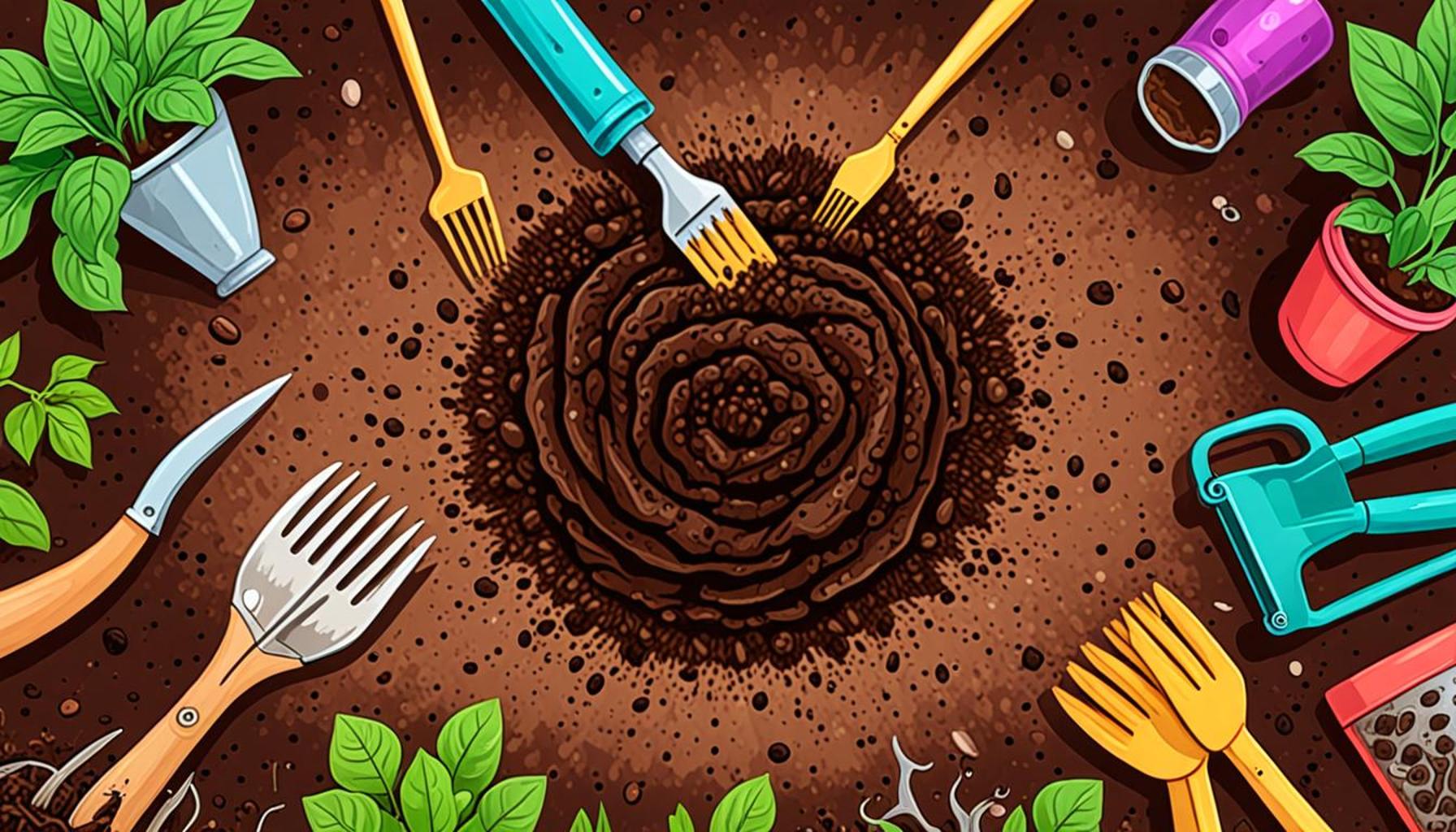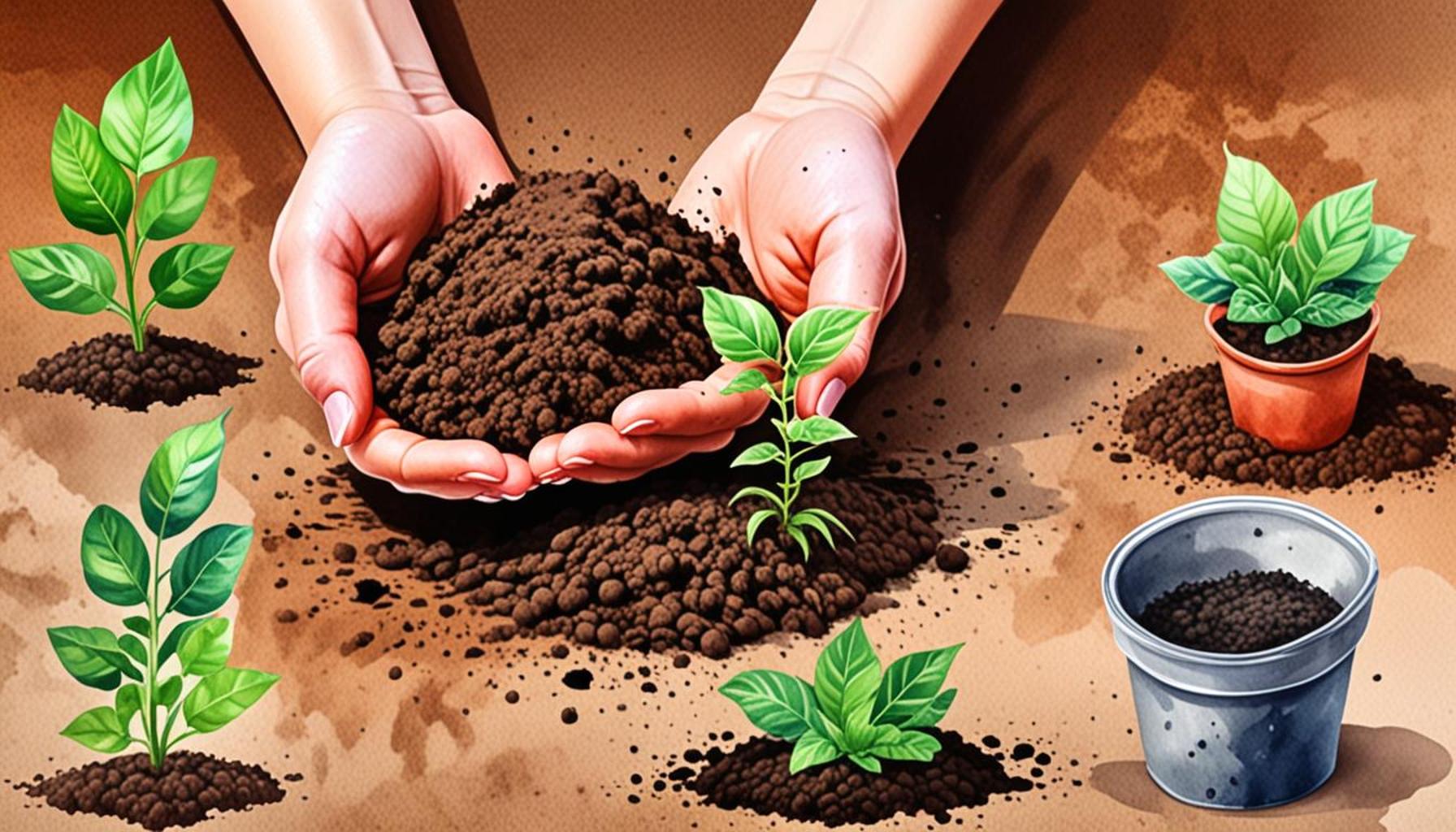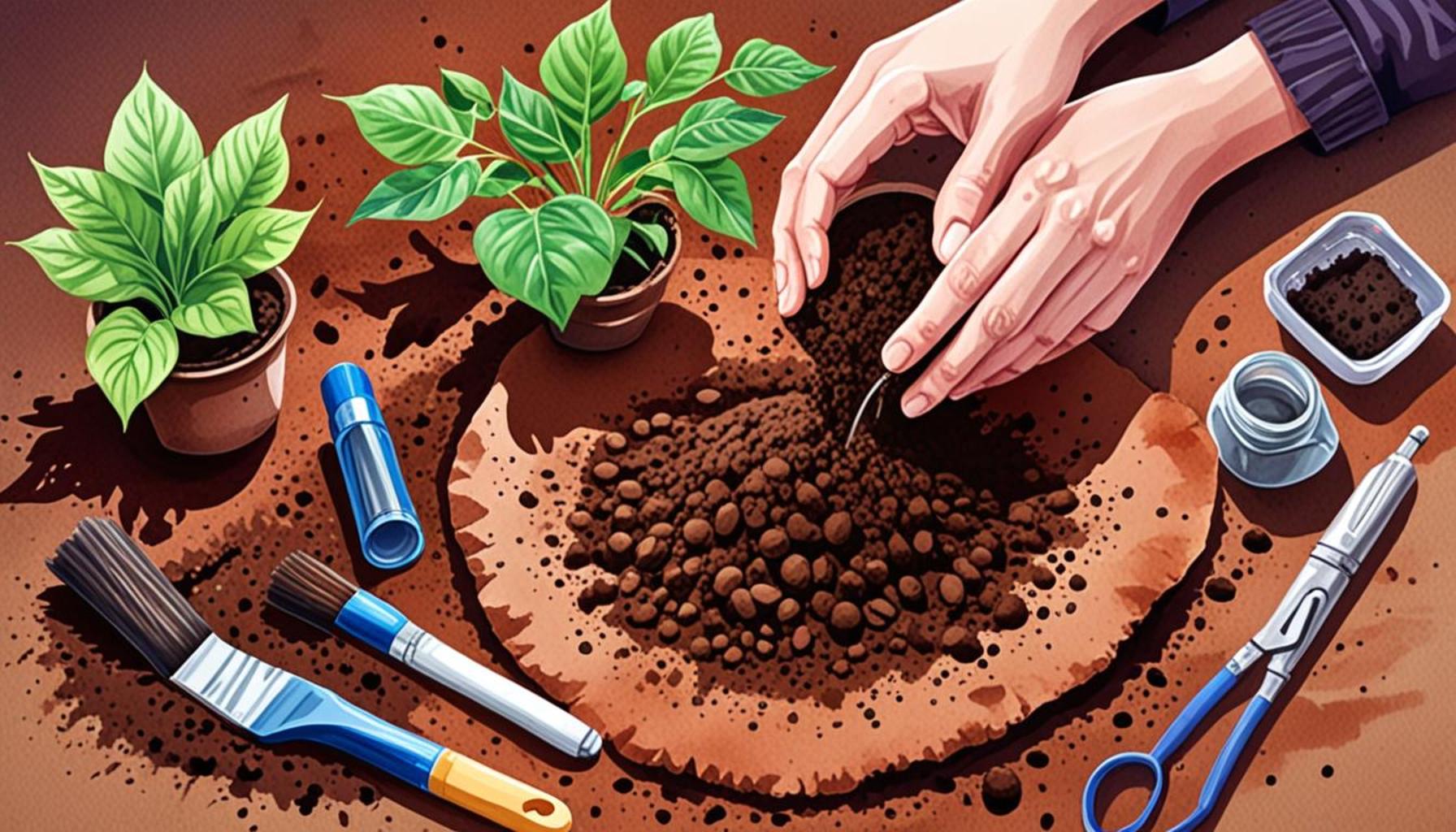The Importance of Soil Preparation for Gardening Beginners

The Key Elements of Soil Preparation
Soil preparation is often the unsung hero of successful gardening. For beginners, understanding its significance can be the difference between a bountiful harvest and a failed garden. Properly prepared soil lays the foundation for healthy plants and vibrant gardens. It is the vital first step in cultivating a thriving green space that attracts not only flourishing plants but also beneficial organisms.
Understanding Soil Composition
Before delving into the steps of effective soil preparation, it is essential to comprehend what makes good soil. Healthy soil is rich in nutrients, has good drainage, and a balanced pH level. A soil test is crucial for evaluating these factors. By sending a sample to a local extension office or using a home testing kit, gardeners can precisely measure pH levels and nutrient content like nitrogen, phosphorus, and potassium. This knowledge helps determine what amendments, such as lime or sulfur, may be necessary to balance the soil chemistry.
Essential Steps for Effective Soil Preparation
What does effective soil preparation involve? Here are some essential steps:
- Testing the soil: Understanding the current condition of your soil will help tailor your gardening practices. It can reveal deficiencies or toxicities that need to be addressed.
- Clearing debris: Detritus in your garden bed, such as rocks, weeds, and old plant material, can compete with your new plants for vital resources. Clearing this debris not only prepares the soil physically but also creates a cleaner environment for planting.
- Adding organic matter: Incorporating compost enriches the soil, improves its structure, and enhances moisture retention. Organic materials like well-rotted manure, leaf mold, or peat moss can create a nutrient-rich matrix that promotes healthy growth.
Benefits of Soil Preparation
These foundational practices provide numerous benefits for the budding gardener. Engaging in soil preparation:
- Boosts plant growth and productivity by providing essential nutrients and fostering a thriving root system.
- Minimizes pest and disease risks by creating a balanced ecosystem where beneficial microbes can flourish and outcompete pathogens.
- Improves overall garden health, making it easier for plants to resist stress from environmental changes.
A Rewarding Gardening Journey
By prioritizing soil preparation, beginners can cultivate a more rewarding gardening experience. Investing time in understanding and preparing the soil lays a robust foundation for growth. Dive into the details of these practices, and discover how they can transform your green space into a flourishing paradise. Furthermore, engaging with local gardening communities or extension services can offer valuable insights tailored to your region, enriching your journey as you connect with nature.
DIVE DEEPER: Click here to learn how to spot pests in your garden
Key Practices in Soil Preparation
For beginners embarking on their gardening adventure, soil preparation can initially seem daunting. However, with a clear understanding of its fundamental practices, you can simplify this process and significantly enhance your gardening experience. Effective soil preparation is about more than just digging or turning over soil; it involves a scientific approach to building a healthy environment where plants can thrive. Here are some key practices that every gardening novice should consider:
Assessing Soil Drainage
Proper drainage is a critical component of healthy soil. Waterlogged soil can suffocate plant roots, leading to rot and other issues. On the other hand, overly sandy soil can drain too quickly, depriving plants of necessary moisture. To assess your soil’s drainage:
- Conduct a simple percolation test: Dig a hole about 12 inches deep and fill it with water. Observe how quickly the water drains. Ideally, a good garden soil should drain completely within a few hours.
- Observe the landscape: Low areas in your garden plot may be more prone to standing water, while raised beds can aid in drainage.
Understanding Soil Texture
Another essential aspect of soil preparation is recognizing the texture of your soil. Soil texture affects its ability to retain moisture and nutrients. The three main soil types are:
- Sand: Coarse and well-draining, but may not hold nutrients effectively.
- Silt: Finely grained, retains moisture well, but can compact easily.
- Clay: Heavy and dense, holds nutrients but may trap water, leading to poor drainage.
A balanced soil often contains a mix of these textures, forming what is called loam, which is considered ideal for most gardening situations. Knowing your soil texture allows you to implement the proper amendments to create an environment suitable for your plants.
Utilizing Soil Amendments
Once you’ve assessed your soil’s drainage and texture, the next step involves incorporating amendments to improve its quality. Organic matter such as compost is vital; it not only enriches the soil with nutrients but also improves its structure and water-holding capacity. Some effective amendments include:
- Compost: Provides essential nutrients, balances pH, and enhances moisture retention.
- Peat moss: Improves soil aeration and moisture retention, especially beneficial in sandy soils.
- Perlite or vermiculite: Helps improve drainage and aeration in heavy, compacted soils.
By understanding and implementing these practices, beginners can take significant strides towards cultivating healthy and productive gardens. Soil preparation does not merely set the stage for the plants; it dictates the overall health of your garden ecosystem, contributing to long-term success and sustainability in your gardening endeavors.
The Importance of Soil Preparation for Gardening Beginners
Soil preparation is an essential aspect of gardening that is often overlooked by beginners. This crucial step lays the foundation for healthy plants and ultimately a flourishing garden. Understanding soil composition plays a vital role in ensuring that your plants receive the right nutrients and support they need to thrive. Beginners may benefit from evaluating soil texture, pH levels, and organic matter content to guide their gardening endeavors.
Another key element of soil preparation is the integration of organic matter. Composting and adding well-rotted manure can significantly improve soil structure and fertility. These materials enhance drainage and aeration, providing a conducive environment for root development. Additionally, introducing beneficial microorganisms helps in breaking down nutrients, making them accessible to plants while also suppressing diseases.
Moreover, the timing of soil preparation is crucial. Gardening novices should aim to prepare their soil well in advance of planting. This empowers them to tackle any potential challenges, such as the presence of pests or poor drainage issues, before they become critical problems. A well-prepared garden ensures that plants can establish healthy root systems, leading to better yields and overall plant performance.
To further illuminate the significance of soil preparation, consider the impact of weeds and competition. Properly preparing the soil before planting helps in suppressing weeds, which can compete for nutrients and water. By removing existing weeds and adding mulch, beginners can create an ideal environment for their desired plants to flourish.
| Category 1 | Category 2 |
|---|---|
| Soil Structure | A well-structured soil improves water retention and aeration. |
| Nutrient Availability | Proper preparation enhances nutrient availability, leading to healthier plants. |
In summary, soil preparation is a fundamental practice for gardening beginners, not just as a laborious task but as an investment in their gardening journey. By taking the time to understand and prepare their soil, novices can set their gardens on the path to success.
DISCOVER MORE: Click here to enhance your plant care knowledge
Essential Tools for Effective Soil Preparation
As a gardening beginner, having the right tools at your disposal can make a significant difference in your soil preparation efforts. You don’t need to invest in a full-fledged gardening toolkit, but certain essential equipment will help ensure that you prepare your soil correctly and efficiently. Here are some vital tools to consider:
Garden Fork
A garden fork is indispensable for breaking up compacted soil and mixing in amendments. This tool can help you aerate the soil and improve its structure, which is crucial for healthy root development. When using a garden fork, focus on lifting and turning the soil rather than merely digging, as this promotes a better balance of soil texture and nutrients.
Shovel
For larger-scale projects, a shovel comes in handy for digging, moving soil, and transferring amendments into your garden bed. Look for a sturdy, ergonomic shovel that suits your height and comfort, as you will be using this tool frequently. A pointed shovel works well for breaking ground, while a flat one is ideal for leveling the surface.
Soil Tester
Understanding your soil’s pH and nutrient levels is fundamental in preparing the best environment for your plants. A soil tester, which can easily be found at local gardening stores or online, provides you with valuable information about your soil composition and guides you in making informed decisions about amendments. Consider testing your soil before planting to tailor your adjustments for specific crops.
Rake
After breaking up the soil and incorporating amendments, a rake will be essential for leveling the surface and removing any debris. A landscape rake can help create a smooth, even bed that is ready for sowing seeds or planting seedlings. This implements also aids in breaking up clumps and thoroughly mixing your soil if you’re preparing multiple planting areas.
Watering Can or Hose
After your soil is adequately prepared, adequate moisture is vital. While rainfall can suffice at times, having a watering can or hose ensures that your new garden bed receives enough water, especially during dry spells. A soaker hose or drip irrigation system is particularly beneficial in raising beds, allowing for targeted hydration and reduced evaporation.
The Benefits of Testing and Monitoring Soil Health
The journey of a successful gardener encompasses continuous learning and adaptation, and understanding soil health is a key part of that process. One important aspect is regular soil testing. Not only does it help you monitor the pH levels and nutrient availability, but it also informs you when it’s time to amend the soil further.
- Seasonal Testing: Conduct soil tests at least once a year, preferably in spring or fall, to track the changes in your soil’s health over time. This data will help identify trends and issues that need to be addressed.
- Nutrient Management: Familiarizing yourself with the nutrient needs of the plants you intend to grow is crucial. Different plants may require varying nutrient profiles, so being proactive in testing can help prevent deficiencies.
By embracing soil preparation and the habits that accompany it—like testing and monitoring—you not only set the scene for immediate gardening success but also cultivate a long-term relationship with the soil. This relationship will yield healthier plants and ultimately lead to a thriving garden ecosystem.
LEARN MORE: Click here to discover the importance of soil testing
Conclusion: Cultivating Your Gardening Success Begins with Soil Preparation
In conclusion, the significance of proper soil preparation for gardening beginners cannot be overstated. It lays the groundwork for a thriving garden and establishes a nurturing environment essential for plant growth. As you have learned, employing the right tools—such as garden forks, shovels, soil testers, and rakes—greatly enhances your ability to amend and maintain healthy soil. Each step, from breaking up compaction to testing nutrient levels, is integral to fostering a flourishing garden.
Moreover, understanding the unique properties of your soil through regular testing empowers you to make informed decisions that cater to the specific needs of your plants. This proactive approach not only maximizes yields but also promotes sustainable gardening practices. The time and effort invested in soil preparation will pay off richly as you witness your plants thrive and flourish.
As you embark on your gardening journey, remember that the foundation of success lies beneath the surface. By prioritizing soil health, you are not only crafting an ideal environment for your crops but also enriching your relationship with nature. Healthy soil leads to productive gardens, and such gardens yield not just abundance but a deep sense of accomplishment and joy. Embrace the process of soil preparation and watch your garden flourish—your efforts will surely blossom into stunning realities.


